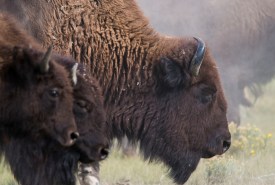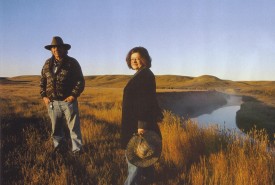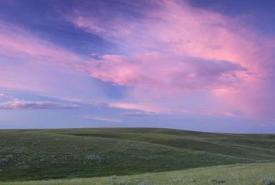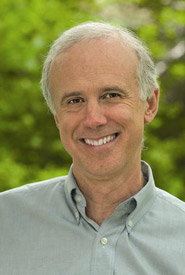What I love about Canada

Bison at Old Man On His Back, SK (Photo by Gail Chin)
Summer road trips were an essential part of my childhood growing up, and they’ve been part of my own family’s summers. They’re a chance for me to turn off the computer, step away from the office and spend time reconnecting with nature. These trips are also a great reminder of both what we’re working towards here at the Nature Conservancy of Canada (NCC), and how lucky we are to live in a country with such stunning and awe-inspiring landscapes.
A few summers ago, we packed the camper van and headed to Saskatchewan, then south through the wide-open plains, towards the Old Man on His Back Prairie and Heritage Conservation Area.
We drove on and on…And then, in what felt like the middle of the world, we passed through the Old Man on His Back fence. There, grazing by the side of the road, a herd of plains bison. If you know anything about the history of plains bison in North America you’ll know what a remarkable thrill it was to see these creatures as we stepped out, their musky scent mixing with the smell of sage.
Old Man on His Back is one of the unsung great places of Canada. Located just along the Canada-U.S. border, it shelters intact tracts of habitat that exists much as it would have 200-300 years ago.

Sharon and Peter Butala at Old Man on His Back, Saskatchewan (Photo by Todd Korol)
Sprawling across 13,000 acres (5,260 hectares), Old Man on His Back is a gift to Canadians, made possible because of one man’s dream. It’s where the late Peter Butala grew up, and where his father before him homesteaded. Peter’s vision was that one day the plains bison, which had once roamed the prairies in the thousands but had been driven out due to over-hunting in the early twentieth century, would one day return.
Armed with this dream, Peter and his wife Sharon approached NCC and donated his land for the purpose of conservation. Together, NCC and Peter worked to steward the land. And in 2003, a herd of 50 plains bison from Elk Island National Park, near Edmonton, were returned to their historic grazing grounds. What was once a dream became a reality.
I had a chance to meet Peter several times over the course of this project. He loved nothing more than to show visitors around and talk about how wonderful this place was. And he helped right the misconception that many of us have of the prairies — as flat and dull. When I spent time with Peter, I came to see this land as spectacular.

Evening sky at Old Man on His Back Ranch, SK (Photo by Branimir Gjetvaj)
On my first visit to OMB late one summer, Peter took me onto a high point of land. We sat and looked at the landscape in a companionable silence. Then he reached into a cooler in the back of his truck and offered me a beer while we took in the vista. A total Canadian experience!
I was there a few years later when we released the plains bison onto the land. It was uplifting to see them return to their historic grazing grounds, moving as a group through the prairies.
These kinds of experiences are always a great reminder of the need every so often to slow down and notice what is happening around us. When there are so many things battling for our attention in our daily lives, it’s important to have places where we can sit back and wait for things to happen…because nature doesn’t always happen when you want it to.
If I’ve been able to sit on a hillside and take in the sprawling views while soaking in the silence, it’s because of the people who cared for the land — people like Peter and his father before him. And all across the country, there are countless places that are just as awe-inspiring and breathtaking that have been conserved by Canadians who believe in the importance of these iconic landscapes. Thanks to them, we are able to visit these places and reconnect with nature.
So this Canada Day, I’m not only celebrating our country’s beautiful natural places, which are like no other in the world. I’m celebrating the visionary Canadians who have believed in the importance of protecting the best of what Canada has to offer.


